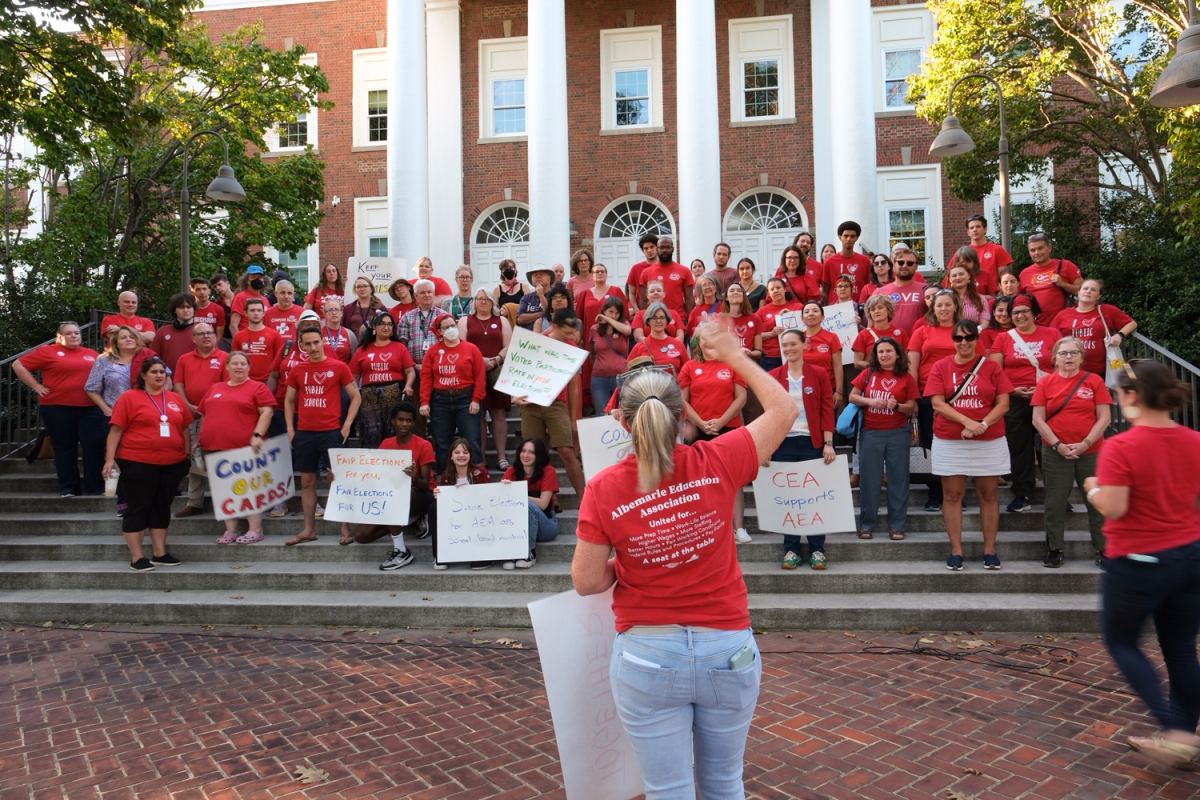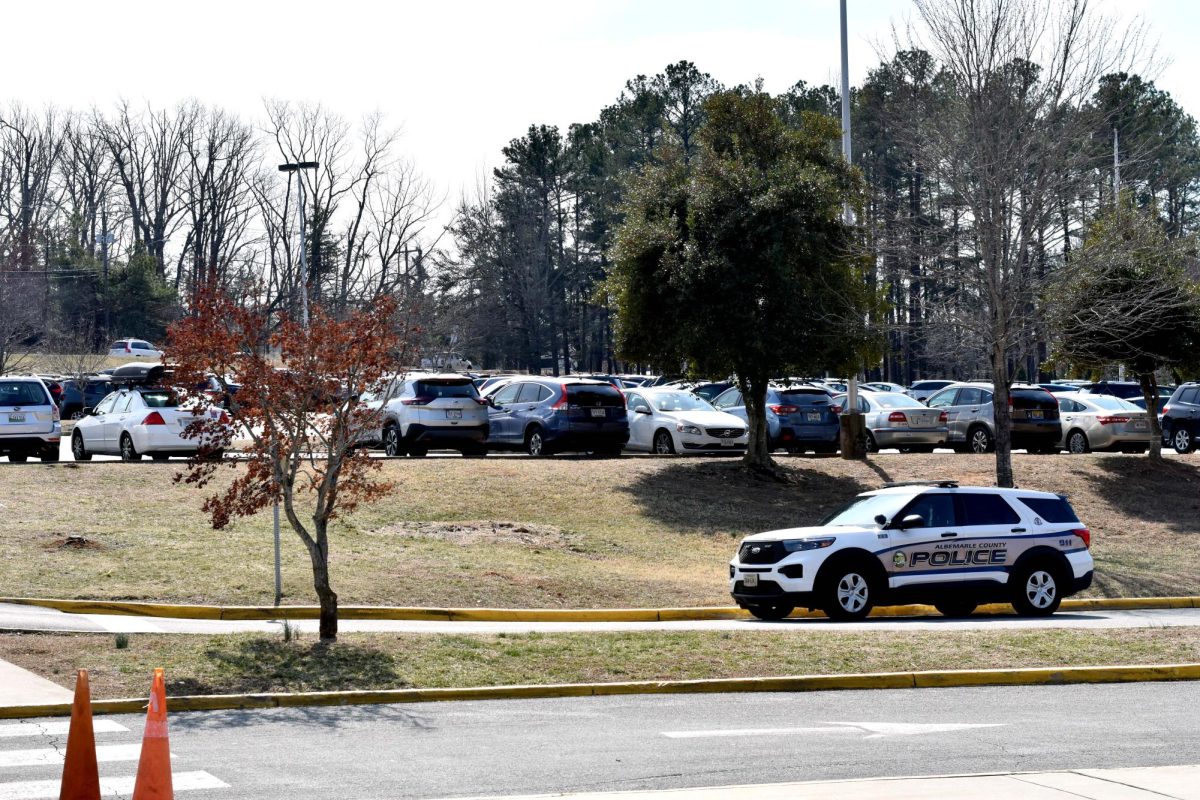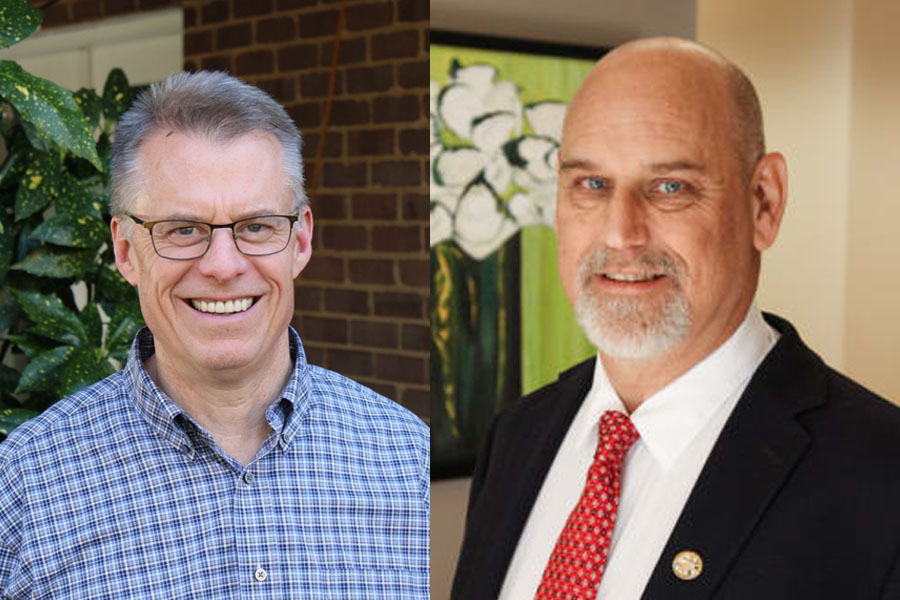The school board approved a resolution giving employees the rights to collective bargaining on April 11. The unanimous decision comes after the board struck down a similar resolution in May 2022 with a split vote of 4-2.
“Collective bargaining is basically negotiating what goes into your contract, specifically what goes into your wages, your benefits, your working conditions,” outgoing Albemarle Education Association president and history teacher Vernon Liechti said. “The collective aspect means you’re doing it as a group.” Liechti has held his position in the AEA since early 2021, and has been involved in the collective campaign since its inception.
“We initiated doing the whole collective bargaining campaign [when] it became legal in Virginia in 2021…We had giant support. We submitted to the school board and they said ‘Not at this time,’ which was discouraging,” Liechti said.
“The first time that the union presented their version of a resolution, Albemarle County was not ready to do it for a variety of reasons,” Scottsville District School Board Representative Ellen Osborne said. Osborne has been on the Board since 2019, and was part of the negotiating team.
“There were no other divisions that had started or they were in the very early stages, and we were not ready to be first out of the gate,” she said. Growing pains within the human resources department further complicated the issue, causing the board to vote against the resolution in 2021.
Since then, things have changed. ACPS now has its own human resources department, and Charlottesville City Schools adopted a similar resolution in March of 2023. That June, representatives from both parties met to negotiate a new resolution. After eight months and an AEA walkout, the two parties agreed to the terms of the new resolution, which was approved by the school board in April.
“However, that’s just one step. There are still two more that must be done according to the resolution,” Liechti said. The AEA will need to collect authorization cards from teachers to show that they want to be included in whatever agreement is reached. Then, those who have signed the cards will need to vote on a representative to do the actual bargaining.
“I see this as more of an opportunity to have a level playing field so direct communication can occur between the staff and the school board,” Liechti said.
To begin the process of collective bargaining, the AEA will collect authorization cards from at least 50% of teachers and staff that signals their willingness for the AEA to bargain for them.
Once that quota is met, an election will take place in the 2024-2025 school year. During this election, all ACPS teachers and staff will be able to vote whether they want to be represented by the AEA, who will most likely be the sole candidate. For this election to count, at least 33% of ACPS teachers and staff have to vote, which is why Liecthi places such a huge emphasis on community engagement.
While the resolution is a significant improvement for teachers, Liechti feels that there are some things left to be desired. “I wanted to include every single employee in Albemarle County Public Schools. We weren’t able to get that,” he said. “It covered about 91%.”
That 9% leftover includes mostly administration and management positions. “I understand why there is a little bit of apprehension on that, but at the same time, I feel a rising tide lifts all boats,” Liechti said.

Going forward, issues that Liecthi hopes to address include teacher planning time and how teachers are paid. “ I know one of the biggest issues for elementary school teachers is planning time. They barely get any. And so that would be a huge boon to a lot of them to have way more of a guaranteed planning time every single day,” he said.
He also believes that if teachers have more choice in their contracts they will stay in the division longer and gain more experience, giving students a better education as a whole.
Overall, Osborne is very happy with the resolution. “I think that the AEA was correct in wanting more voice in their working conditions,” she said. “So I feel like this is a way that guarantees it because that excites me as a division, we can say, ‘Oh, yes, we listen to you.’ But this sort of assures them that we’re listening to them, and that we want to make their working conditions better.”
Liechti expressed a similar sentiment. “A key thing that I feel is good about this process is that it needs to happen and people need to get involved in the process…And if we’ve got 2600 union members pushing on this, that’s power right there. And there are lots of different actions we can take to demonstrate that and get the community to back us up on this. And that ultimately is going to get everybody what they want.”













